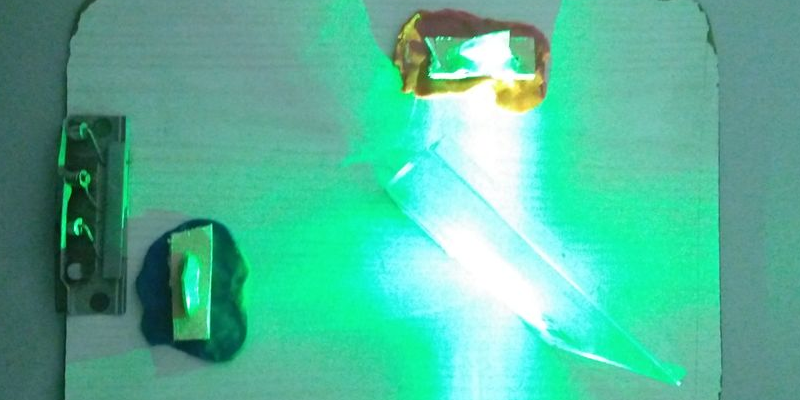An interferometer sounds like something complicated, and in a way, it is. But it is also pretty easy to build one with some common materials. [Let’s Innovate] has instructions for how to make an interferometer using a green laser pointer, some mirrors, and a CD case. one of the most mundane parts, though, might be the most important: Play Dough.
The very sensitive device needs very precise alignment of the mirrors that reflect the beam. Using Play Dough it is easy to adjust the mirrors to the spot that is just right and then have it stay there.
For the best result, the mirrors really need to be first surface mirrors and not the more common kind with the reflective part on the back. Apparently, a green laser gives better results than a red one, too. If you don’t want to hack up a CD jewel case, a DVD player may give up a beam splitter.
So what do you use it for? Well, most of us use it to see the pretty patterns. But the instrument actually has wide-ranging applications to measure very small distances in fields as diverse as astronomy, optics, and photomicroscopy. To do anything really practical, you might need to add a detector of some sort.
If you want a more robust build, this one is similar. If you have a well-stocked test bench, you might be able to get by with even less.















Mount one of the mirrors on a piezoelectric disk. You can glue a magnet to the back of a mirror, then use a second magnet (unglued) on the back of the piezo to hold the mirror magnet against the front of the piezo.
Then put two phototransistors (or other light sensors) on the target straddling an interference fringe. Run the light signals to a differential amplifier (ie – op amp) controlling the voltage on the piezo such that any difference in light signal makes a voltage on the piezo that pulls the fringe sensors back to equal intensity.
You now have a *very* sensitive force/pressure sensor. A string from the back of the piezo over a pulley to a hanging 1kg weight can sense the gravitational attraction of the moon – just measure and plot the error voltage over time.
An interferometer like this can probably be used to make a picogram scale.
Dear Pwalsh,
Please make a more detailed article or video about what you are suggesting. I want to measure weight of a moving train.
You’re more likely to measure the temperature difference between night an day this way.
Dear Pwalsh,
Please make a more detailed article or video about what you are suggesting. I want to measure weight of a moving train.
Hands down the worst “interferometer” I’ve ever seen.
Want to make your own first surface mirrors? Clean glass sprayed with Spaz Stix Ultimate Mirror Chrome. It also works on styrene, lexan, urethane and most any other plastic or metal with a glass smooth surface. On a clear substrate it’ll make a reflective mirror from both sides. Spray both sides and you have a double sideed first surface mirror.
A better first-surface mirror was discussed right here, and even works with more powerful CO2 lasers: https://hackaday.com/2014/01/16/cheap-free-mirror-replacement-for-your-co2-laser/